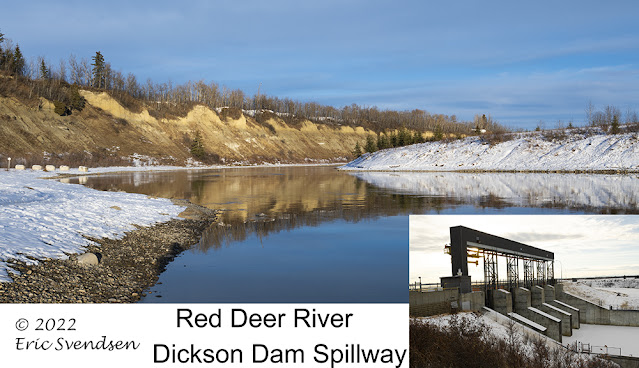The Red Deer River and Dickson Dam
 |
Water is at its densest at 4°C. Water cooler than this is less dense and actually rises above it where, given the right conditions, will freeze providing an icy shield for the lake surface. Underneath the ice it is just a bit warmer, enough to allow the water to be in liquid form and sustain life. Dams, such as the Dickson Dam near Innisfail, Alberta, often have gates and a spillway that are used to control water levels and possibly produce hydroelectricity. That water comes from underneath the lake's surface below any ice. This water may allow parts of the river to be open rather than iced over.
As I photographed the area around the dam today, I noticed several ducks swimming in the open water. They would have normally headed south, but the spillway's water allows them to remain year-round residents. Similar situations arise when warm, discarded water from industrial plants enters lakes and rivers. Bodies of water that would normally be frozen over are kept ice-free. It is just another way that we are affecting the world around us.
Thanks for reading.
Eric Svendsen www.ericspix.com



Comments
Post a Comment